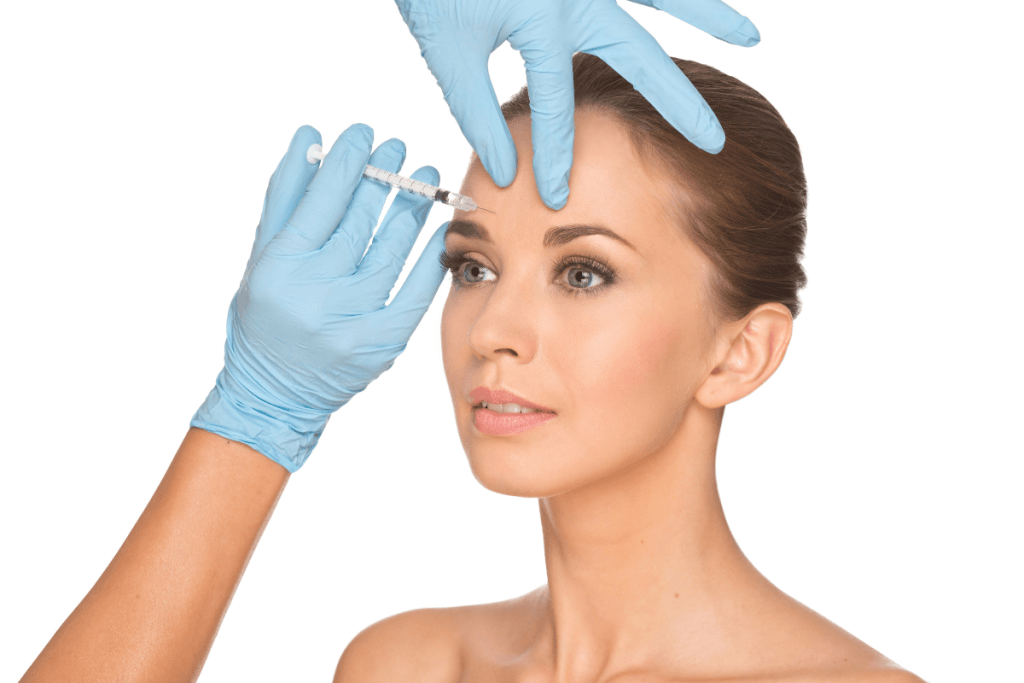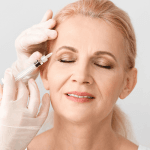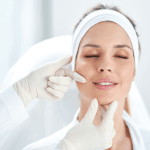Botox has become a household name, primarily known for its ability to reduce wrinkles. However, its uses go beyond aesthetics. For healthcare professionals, Botox offers a wide range of applications, from treating dynamic wrinkles to managing medical conditions such as chronic migraines. This article will explore what Botox is, how it works, and its dual role in enhancing both appearance and health.
What is Botox and Why Is It So Effective?
Botox is an injectable treatment made from a purified form of botulinum toxin type A. When administered in small, controlled doses, Botox temporarily relaxes muscles by blocking nerve signals that trigger contractions. This mechanism explains how Botox works, making it highly efficient in treating both cosmetic and medical conditions.
Cosmetically, Botox is most commonly used to smooth out wrinkles caused by repeated muscle movements. Dynamic wrinkles, such as crow’s feet around the eyes, frown lines, and smile lines, often soften significantly after Botox injections. This leads to a refreshed, youthful appearance, making Botox a go-to option for patients looking for non-invasive wrinkle reduction treatments.
Botox’s applications extend beyond aesthetics. Botox for migraines has gained significant recognition as a treatment option for individuals who suffer from chronic migraines. By relaxing specific muscles and blocking the release of pain-related chemicals, Botox can help reduce both the frequency and severity of migraines. Healthcare professionals treating patients with recurring migraines find Botox an effective solution, offering relief for up to three months per treatment session.
Key Benefits of Botox for Wrinkle Reduction
Botox is widely recognized for its ability to reduce wrinkles and fine lines, offering a non-surgical solution for those seeking a youthful appearance. With quick results and minimal downtime, it has become a popular choice in cosmetic treatments.
1. Long-Lasting Results
For patients seeking cosmetic enhancement, Botox injections offer a convenient and minimally invasive solution. Results are visible within 3 to 5 days, with full effects after two weeks. Typically, results last for 3 to 4 months, requiring repeat treatments to maintain and sustain the desired look.
2. Non-Surgical Convenience
A key advantage of Botox is its ability to provide remarkable results without surgery. Patients can receive the treatment during a short office visit with minimal downtime, quickly resuming daily activities.
3. Striking Transformations
When comparing Botox before and after photos, patients often notice a striking transformation. Fine lines are softened, and deeper wrinkles diminish, resulting in a smoother and more youthful appearance.
4. Targeted Wrinkle Reduction
Botox is commonly used to treat wrinkles under the eyes and smile lines, as these areas respond well to treatment. Its non-surgical nature makes it an increasingly popular option in cosmetic clinics.
Medical Applications of Botox
Beyond its cosmetic benefits, Botox has a range of therapeutic uses in the medical field. One of its most notable applications is in the treatment of chronic migraines. Botox for migraines works by targeting specific muscles and nerve pathways that contribute to pain. By preventing the release of chemicals that transmit pain signals, Botox reduces the intensity and frequency of migraine episodes. This offers significant relief to patients, who may experience fewer headaches for up to three months following treatment.
Another common medical use of Botox is in treating hyperhidrosis, or excessive sweating. By blocking the nerve signals that activate sweat glands, Botox helps reduce excessive sweating in targeted areas such as the underarms, hands, and feet. This can drastically improve patients’ quality of life, especially for those who have not found relief through other treatments.
Additionally, Botox is utilized to treat muscle spasms and certain neurological conditions. It can help lessen muscle stiffness and discomfort in patients with conditions like cervical dystonia, a movement disorder that causes severe neck and shoulder contractions. The versatility of Botox makes it a valuable tool for healthcare professionals treating a variety of medical conditions beyond cosmetic enhancement.
How to Use Botox in Practice
Administering Botox in both cosmetic and medical contexts necessitates meticulous assessment and precision. Healthcare professionals must identify specific areas for injection to achieve optimal outcomes for both aesthetic enhancements and medical interventions. Below are key considerations for effective Botox administration.
Botox for Cosmetic Treatments
In cosmetic applications, healthcare providers should conduct a thorough evaluation of the patient’s facial musculature to determine the most effective injection sites. Common target areas include the periorbital region for crow’s feet and the glabellar area to address frown lines. The number of injections will vary according to the treatment area and the patient’s desired results.
Botox for Chronic Migraines
When utilizing Botox for chronic migraines, injections should be administered at precise locations around the head and neck. Healthcare professionals must adhere to established protocols to ensure effective relief while minimizing potential side reactions in patients.
Botox for Hyperhidrosis
In cases of hyperhidrosis, or excessive sweating, Botox is typically injected into areas such as the axillae (underarms). This intervention can significantly decrease sweat production, thereby enhancing the patient’s comfort and self-esteem.
Cost Considerations
The cost of Botox varies based on the treatment area, the number of units needed, and the geographic location of the provider. For cosmetic treatments, prices usually range from several hundred to over a thousand dollars per session.
Possible Botox Side Effects
As with any medical procedure, Botox carries some risk of side effects. Most are mild and temporary, such as swelling, redness, or bruising at the injection site. Patients may also encounter a headache or flu-like symptoms in the days following treatment.
In rare cases, more severe side effects can occur. These include muscle weakness in untreated areas, drooping eyelids, or difficulty swallowing. Is Botox safe for all patients? While Botox has an excellent safety profile when administered by a qualified provider, it is important to discuss any concerns and review the patient’s medical history before proceeding with treatment.
Healthcare professionals should also inform patients that the effects of Botox are not permanent, and regular treatments are needed to maintain results. Monitoring the patient’s response to each session can help minimize the risk of adverse effects.
Takeaways
Botox remains one of the most versatile and widely used treatments in both cosmetic and medical fields. Its ability to smooth wrinkles under the eyes, reduce crow’s feet, and soften smile lines makes it an attractive option for patients seeking a non-invasive cosmetic enhancement. In addition, Botox for migraines and other medical conditions highlights its therapeutic potential.
Botox treatments typically last 3 to 4 months, with patients requiring follow-up sessions to maintain their results. For healthcare professionals, understanding what Botox is and how Botox works is essential to providing optimal patient outcomes, whether for aesthetic improvements or medical relief.
Frequently Asked Questions (FAQs)
How long does Botox last?
The effects of Botox typically last for 3 to 4 months, depending on the patient and the treatment area. After this period, muscle activity returns, and repeat treatments are needed to maintain the results.
How much does Botox cost?
Botox pricing varies based on the treatment area and number of units required. Costs can range from several hundred to over a thousand dollars per session, depending on the provider and location.
Is Botox safe?
Botox is generally safe when administered by a qualified healthcare professional. However, potential side reactions, such as bruising, swelling, and in rare cases, muscle weakness, should be discussed with patients before treatment.






